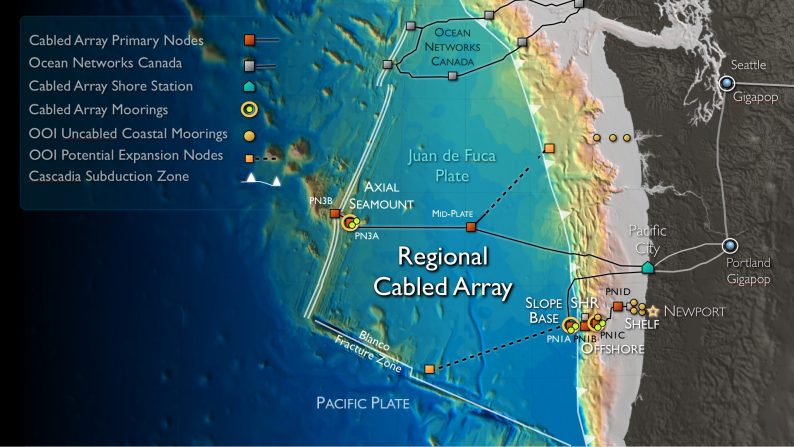
The U.S. National Science Foundation announced Sept. 21 that it is awarding a coalition of academic and oceanographic research organizations a new five-year cooperative agreement to operate and maintain the Ocean Observatories Initiative. The University of Washington, Oregon State University and project lead Woods Hole Oceanographic Institution will continue operating the OOI, a science-driven ocean observing network that delivers real-time data from more than 900 instruments to address critical science questions regarding the world’s oceans. The coalition was previously funded in 2018.
Under this new $220 million total investment, each of the three institutions will continue to operate and maintain the portion of the observatory for which it is currently responsible. The award amount for the UW is $52.4 million.
“I am extremely excited about this next five years of operations and the continued opportunities that the Regional Cabled Array will provide for unparalleled environmental data throughout entire ocean depths in some of the most dynamic environments on Earth,” said Deborah Kelley, a UW professor of oceanography and director of the Regional Cabled Array. “Decade-long measurements from more than 150 instruments sampling every second make this a perfect system to captivate users with ‘new eyes’ and AI applications, which will undoubtedly lead to important new discoveries and predictive capabilities.”
Read more at UW News »
